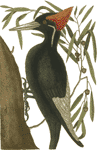Natural Resources, School of

School of Natural Resources: Faculty Publications
Document Type
Article
Date of this Version
1-13-2025
Citation
Elowsky, C.; Higley, L. Confocal Laser Scanning Microscopy as a Method for Identifying Variation in Puparial Morphology and Establishing Characters for Taxonomic Determination. Insects 2025, 16, 88. https://doi.org/10.3390/ insects16010088
Abstract
Calliphoridae, or blow flies, are of much ecological and practical importance given their roles in decompositional ecology, medical and veterinary myiasis, and forensic entomology. As ephemeral and rapidly developing species, adults are frequently not present for identification, but puparia (the remaining outer integument of the third instar larvae) are frequently found. These heavily sclerotized remains are stable in the environment but they are of a conservative character. Historically, scanning electron microscopy (SEM) has been used for characterization, a technique which is not only time-consuming but also often expensive, effectively making large numbers of specimens impossible to quantify. As an alternative, confocal laser scanning laser microscopy (CSLM) was tested for utility in providing superior data over SEM. Furthermore, due to the use of intrinsic autofluorescence for imagining, CSLM is significantly more rapid than SEM, requiring no preparation for imaging. Three channels of excitation and emission spectra provided not only image data from the pupal wall but also from the hydrocarbons found upon the puparia. The excitation wavelengths were 404.7, 488, and 640.5 nm, and the emissions were 425–475, 500–550, and 663–738 nm. For ten species of calliphorids, CSLM was used to image puparia. Not only did this provide characters for species identification but it also allowed for the examination of hundreds of specimens.
Included in
Natural Resources and Conservation Commons, Natural Resources Management and Policy Commons, Other Environmental Sciences Commons


Comments
Open access.